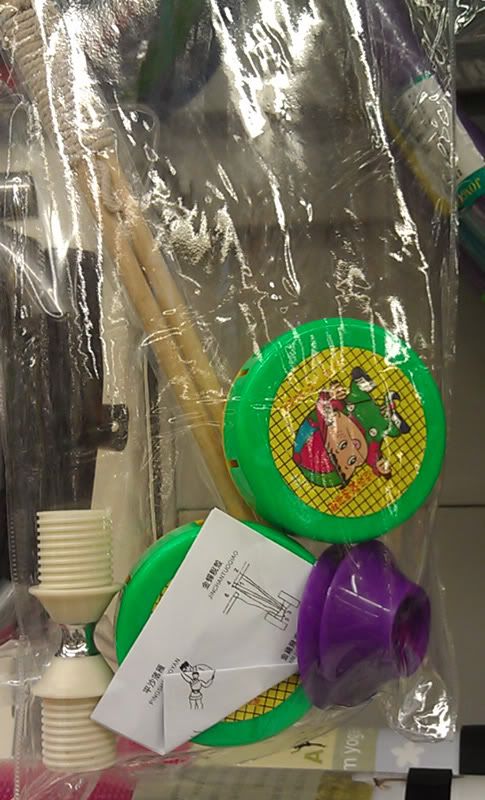Warning: RANT post!!!
Here's a recent gradual realization: Human's effort in civil progression has only one main direction, which is dehumanization.
Standardization, institutionalization, automation. To create or produce or to affect the most with the least effort... we call it civilization. Regardless of the imperfect nature of us as humans, we seek ways to deny our own identity in pursue of becoming perfect.
After living through a world of institutionalized education system, then a few corporate jobs, and recent exposure to the world of scientific standardization, I realized that all of these are just efforts to create relevancy of oneself. Most of these so-called systems of judgement or score card are really just trying to create an impression of absolute from opinions.
First example:
When I was in X company, as a designer in a technology and manufacturing dominated world, we had to interface with engineers all the time, and convince them that we are not bullshitting them, as well as to get them to do their job better. In a highly politically competitive environment, designers had to find stupid ways to "leverage" their relevancy within the company, especially against those engineers. Engineers, like marketing people, live by their numbers. It's like their brains stop function as a humans and turn themselves into robot mode, think in ones and zeros. They look at score cards, spec sheets, performance numbers etc. So when a designer has an idea that results in abstract benefits like "perceived quality" or "user experience", the designer had to create his own "matrix". This is basically a stupid score card that rates an idea to see how it fairs when its being judged against different criteria. For example, say if a designer thinks that the handle to a door should be more bulky and rounder, he puts the idea against criteria such as "strength", "ergonomic", "cost", "durability", "torque required" etc. So he basically turned a romantic idea of having a candle light dinner into tangible numbers so his engineer bitch can understand the benefits and weigh if she should go out to dinner with him.
Second example:
At the same company X, in order to "leverage" design as an important and indispensable part of the company value, the department decided to create its own "matrix" system to rate engineering efforts. (DESIGN RATES ENGINEERING OMG!!!) In this case, it's the perceived quality of products. Criteria can be things like.... "how does the door feel when pulling it open", "does hinges make sound", "does handles feel solid", "sharp edges", "paint job" etc. Each criteria gets its own score, again, in numbers. So we are the engineers' bitches after all.
As a designer, what I really cannot accept is the standardization of user/customer/human needs. Basically, designers do their research. Whether the research result comes in the form of tangible numbers or abstract literature, images or description, it's really up to the designer to read what it means. So the designer goes off and do his own thing. However, when he comes to a design check point, he has to be managed just like any engineer or staff in the company. In order to "reduce risk", the company puts his design-in-progress against a standard matrix to see how it fairs by the company's standards, so they can make sure that every idea is a quality idea. Ok, so this reminds me of my school days when we went to school because we had to take the exam. Designers end up NOT designing for the user/customer/HUMAN's needs. The designer ends up designer for the matrix system because he is not judged by the human, he's judged by the system.
Third example:
In the many things I've been involved in designing, a few have key pads. No big deal, everything these days has key pads (although they are a dying breed of its own kind now). So here's a dilemma. A set of keys needs to be well-accessible to function as a good set of key pad. It however cannot be TOO easily accessible. So, yes, we designers and ergonomists understand this delicate balance and work our ass off to reach that perfect point. We consider things such as horizontal profile of the entire key pad contour, the lateral contour, each key size, distance between keys, height of partitions between the keys, the pressure to actuate the keys, the depth of the press to actuation, the profile of each key, the height of each key, key-lock function, audio feed backs, visual feed backs, touch feed backs blah blah blah. So after months of rigorous efforts within the design and engineering teams, we have come to the most well balanced design given the constrains. All goes well until the last minute when a senior dude comes down and say "It doesn't past the PENCIL TEST!!!!"
"Pencil test" WUT??? Basically, it's taking a pencil and rub against the key pad to see if it actuates any key. Why? Because there had been customer complains about key pads being inadvertently actuated before, like a loooooong time ago. The then engineers, out of desperation, invented this trick to test future key pad designs. Since there hasn't been similar complain ever since, they BELIEVE in it. So why do I get so worked up about this? First of all, every key pad design is different, used in different scenarios by different user groups. They look different, have different functions, different sizes, color, spacing etc. The devices are worn and used differently. So by using ONE standard test to rule out our effort of finding the most user-centered solution... well, it's bull shit. Secondly, if you are an engineer who claims that this test is so great, how come it's not repeatable? Tell me what's the diameter of the pencil to be used, the shape, the texture, how much pressure, at what angle, at what velocity...? No you can't, because you know it's bull shit.
Fourth example:
I like how engineers and technologists love to judge the quality of an experience using quantifiable means. For example, praising the quality of image of a DVD movie and its awesome special effects disregarding its actual content. So a censored porn can be top class too! Or, saying how great a piece of "music" is because of the technique or the players, the crispness and depth of the amplifiers etc, or praise how great an opera singer is without even knowing what the hell he's yelling to the crowd.
I also love how technologists and engineers feel awesome about their scientific logic, like it's going to save the damn world. There's this test to see how a material repels water. Basically you put the sample material on a stand at 45 degrees and let water drip on to it. Then you observe the water trail and compare it to a set of patterns in the hand book. You find the closest pattern and record the number that is associated to it as the rating of the repellent ability of the material. NO THAT'S NOT ALL! The "standard patterns" in the hand book are hand drawn, like some 3-year old's doodle! It's an international standard, used like a bible by millions of engineers world wide and is supposed to save the world! So basically, the test told me to turn an impression into an opinion and record it as an absolute. WAY TO GO HUMAN KIND!!!!!
In the generations of human civilization, we constantly betray ourselves by using standardization as an excuse to affect more with less. Before there was currency, we traded by needs. We first understand what we need, then pick an item that we own that we feel is of equal value and trade it for what we need. In another word, we KNOW what we need before we try to gain the means to satisfy the need.
In the world of standardized value, a.k.a moneeey, we just keep making money and make money. We desire to become rich, to have lots and lots of money... all before we even know how we are going to spend it. Money means nothing to the mother nature. However, to trade money for value, we have to use the earth's resources to trade. This means, we are taking unnecessarily and meaninglessly from the natural resource, a limited supply of necessities, to supply our blind desire to have more money. Then when we have all that money, we start to think about how to spend it, but we don't really need to, and garbage are produced. In a world of 100% efficiency, there should not be garbage. Just ask the cave men.
Then we created laws to standardize moral value. We created institutions, such as religions and schools to standardize thoughts, logic and ideas. We standardize lifestyles and culture through media. However, has the human kind become more "civilized"? Has the human kind gain more understanding about himself and the world he lives in? Has the human kind understand better his value to the rest of the world? Has the human kind become wiser? Has human kind become close to "perfection"?
All I know is, the human kind is still, if not even worse, lost souls running around trying to find ways to make itself feel relevant.































































